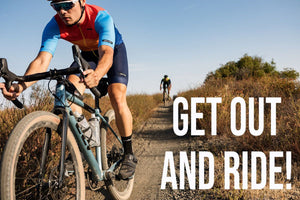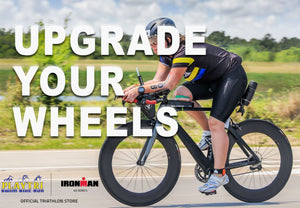
Open Water vs. Pool Swimming
If you are like most triathletes, swimming is arguably the most challenging part of both training and racing. Most athletes will wake up early and hit the cold water of their local lap pool before the workday starts, and we all know the hardest part of the day is gathering up the courage to jump into a cold pool. But once we get over that initial jump, we can generally get through the swim workout prescribed for the day. A swim workout is just you, the time, and the seemingly endless black line at the bottom of the pool.
Why is it that an athlete can be so confident with their abilities in the pool, but end up panicking in the open water? The number one detail that athletes should understand is that open water and pool swimming are two different sports with different skillsets. In the pool, you have your own space and you do not have to worry about other athletes around you, waves, buoys, etc. In the open water, you have a lot of uncontrollable factors that could derail your race at any moment.
Pool Swimming
The temperature and environment of pool water is mostly very comfortable and very predictable. The pool water temperature predictability is something that all athletes are expecting as they jump into the water, and each athlete is used to swimming in their own lane, or with one other athlete splitting the lane. The sense of familiarity can help those beginner swimmers feel more comfortable in the water.
Apparel and equipment in which athletes train in are pretty much the same on a day to day basis at the pool; all of which can be found at any Playtri location or online at the Playtri Website. Men will generally wear jammers or briefs, with the occasional buoyancy short to simulate wearing a wetsuit and keeping the hips elevated. Women will train in a one piece or a two piece training suit. Equipment will vary from athlete to athlete, but most swim bags will consist of paddles, buoys, kickboards, snorkel, and swim fins. Each athlete will have their own personal preference on types of equipment, but these are tools athletes will use to focus on various parts of their strokes.
To use lap swimming to best prepare for open water swimming, an athlete must alter their stroke and habits. For example, former swimmers who utilize dolphin kicks off their walls should not do this when preparing for an open water swim because there are no walls or opportunities for dolphin kicks in the middle of a race. Experiment with a breathing pattern that you are comfortable with for the duration of your race distance and practice that pattern until it becomes second nature. One example is an athlete who breathes to their right side only; they breathe every other stroke, and sight every 3rd breath.
Open Water Swimming
The environment and predictability of an open water swim is very different from that of a pool swim. There is no enclosed area that you can call your own like the lane you would swim in at the pool. The vast openness of the body of water you are about to embark on can bring about thoughts of anxiousness and nervousness in even the most seasoned swimmers.
In the open water, athletes generally will not be able to see the bottom of the body of water. This fact alone can bring about thoughts of uneasiness because this takes away the idea of being able to control what is going on around you. Practicing sighting and being aware of your surroundings is important in your swim sessions. This can be completed in pool training sessions by focusing on objects around you, looking a little more forward than down, and practicing your sighting. Having a coach is a great way to get some feedback as it pertains to specifics about your stroke and how to adjust from pool to open water swimming.
Open water swimming can be very cold, which will change a lot of factors compared to pool swimming. For one, the temperature alone is enough to bring about that initial gasp of air as you enter the water. Athletes will generally start to swim as fast as they can to try to warm their bodies up. This will quickly raise the heart rate and trigger those anxious thoughts and possible panicking scenarios. I suggest to all my athletes that they take the first couple of strokes nice and smooth so they can find their rhythm while their heart rates are still in a controlled state. It is important to make sure to remember that you can control your race but not your environment.
In a cold open water swim, athletes will mostly opt to wear a wetsuit, which not only keeps heat in, but changes the position of the body in the water. It is important to practice in a wetsuit or swimskin before competing because you should never try something new on race day. If you cannot get to an open body of water to practice open water swimming, wear your wetsuit in the pool for a little bit of time, if you can. Get to know the position your body will be in when you have the wetsuit on and get comfortable with the fit for a longer duration of time.
How to Prepare for Open Water
The best option would be to go find an open body of water near you and practice your open water swimming. Do NOT practice open water swimming alone, and I also suggest a brightly colored buoy, such as the Playtri Buddy Bag Swim Buoy so that people around you can see you.
You can practice sighting in a pool by altering your breathing pattern to match what you will do in a race. One suggestion would be to do a set of 100s where you sight every 4-6 strokes. Find a point in front of you on both ends of the pool and quickly get your head up to sight that given point; this will act like the buoy you will be looking for in any given race. Practice with a wetsuit or sim shorts so that you can get used to the position of having your hips assisted to the top of the water. You can also mimic this position using a pull buoy. Finally, work on your initial breathing when you first get into the water. Mental preparedness is arguably the most important aspect of sport, so if you are mentally prepared for the jump into the water and have a plan on how to execute, then you will be on your way to a successful swim leg!
If you have any questions about swimming, whether that be pool or open water, you can contact me at michael.rourke@playtri.com. As a head high school swim coach, and triathlon coach for all level athletes, I have worked with athletes of all skill levels, from National ranked athletes to brand new swimmers. Please do not hesitate to reach out if you have any questions at all! Happy swimming!


